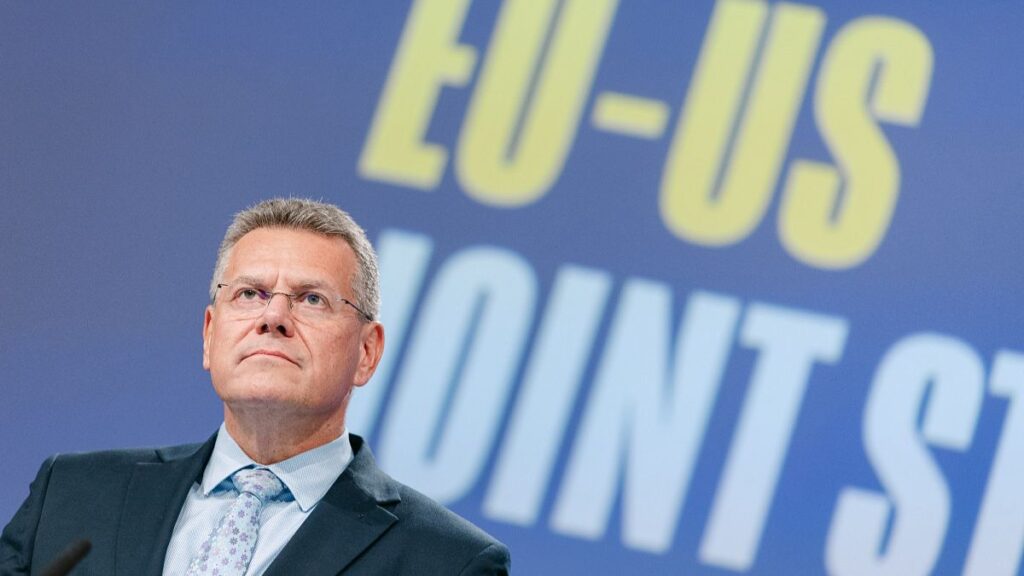Brussels and Washington on Thursday released the long-awaited joint statement sealing the trade deal they struck nearly a month ago, confirming that cars, semiconductors and pharmaceuticals will face a maximum 15% tariffs to enter the US.
The statement, which like the deal struck on 27 July in Scotland between European Commission chief Ursula von der Leyen and US President Donald Trump, is not legally binding, states that the reduction of tariffs for cars “will apply in tandem with the EU initiating the procedures for tariff reductions vis-à-vis US products”.
A customs duty rate of 27.5% currently still applies on EU cars and car parts.
Trade Commissioner Maroš Šefčovič told reporters that the “firm intention” of the Commission is to present the legislative proposal and launch the process before the end of the month. In that case, he added, the 15% rate would apply retroactively as of 1 August.
The document also states that as of 1 September, unavailable natural resources (such as cork), all aircraft and aircraft parts, generic pharmaceuticals and their ingredients and chemical precursors, will benefit from a special regime, with only normal non-discriminatory tariffs (MFN) applying.
Only MFN tariffs currently apply to pharmaceuticals and semiconductors, with the 15% rate set to kick in only if the US decides to raise duties following the conclusion of 232 investigations.
Disappointingly for some EU countries, like France, wines and spirits don’t appear to be on the list of exempted products, although a statement from the Commission emphasises that “both sides agree to continue to ambitiously work to extend this regime to other product categories – a key deliverable for the EU”.
Šefčovič stressed to reporters that the EU “have been very clear this is very important for us”.
No deal seems to have been struck on steel and aluminium too, with the current 50% tariff rate still applying to EU exports.
The statement only states that the two sides “intend” to work together to address global challenges in the sector such as overcapacity, and to work on “secure supply chains between each other including through a tariff rate quota solution for EU exports of steel and aluminium, and their derivative products”.
A senior Commission official speaking on condition of anonymity stressed that there no specific timeline for the two sides to agree on tariff quotas for steel and aluminium.
“Of course, we are keen to move forward as fast as we can,” the official also said, adding that quotas are “more difficult to negotiate” as they “involve more variables” than a simple tariff reduction.
Šefčovič, who spent 100 hours negotiating with his US counterparts over the past two months, reiterated that “this is the most favourable trade deal the US has extended to any partner”.
He described it as a “first step”, one that “strengthens” economic ties between the two parties “even further” and brings “stability and predictability to our relationship, to things that matter deeply, to our businesses”.
“It also strengthens our broader transatlantic partnership, which is more important than ever in today’s complex geopolitical landscape,” he added.
Von der Leyen and her counterpart at the European Council, Antonio Costa, both welcomed the joint statement, stressing that it provides “predictability” and “stability”.
EU ambassadors, briefed earlier on Thursday morning on the content of the joint statement by the Commissioner, largely had positive reactions, according to an EU diplomat.
This is a developing story.
Read the full article here

